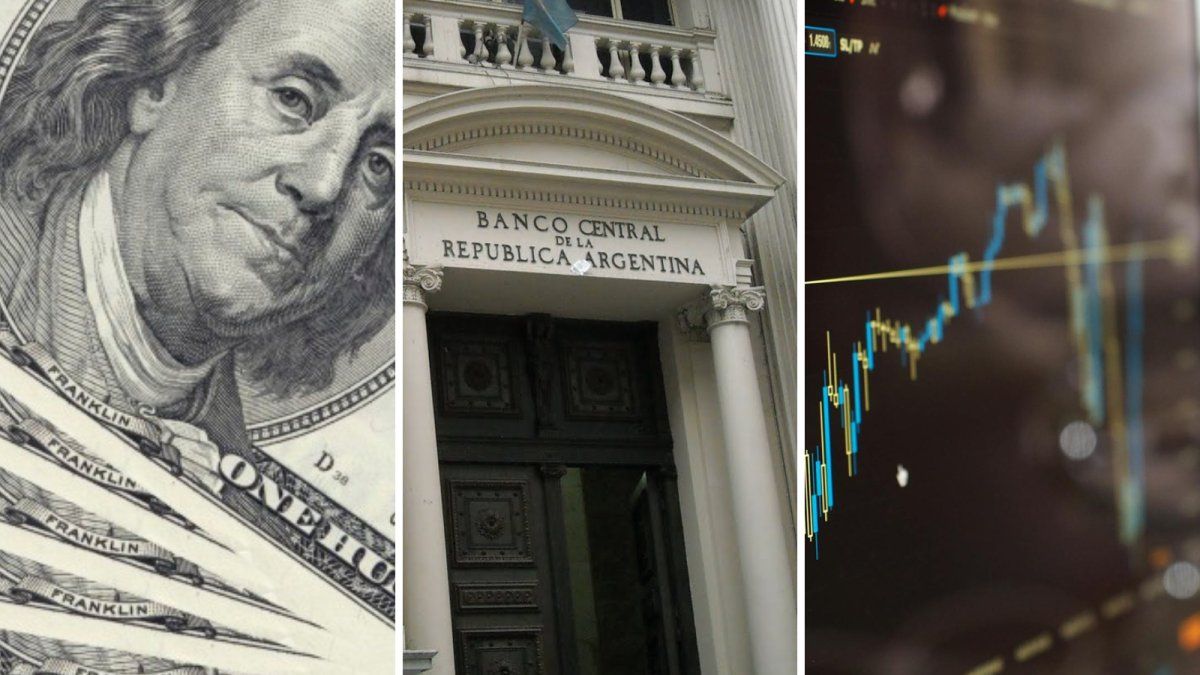Not only does the employment data generate a more expansive monetary policy, but the set of economic data (lower inflation, abrupt fall in factory orders, weekly record of unemployment benefit applications) support the prospect of a more aggressive Fed in reducing rates.
Fall in the technology sector
There were other signs of a cooling off before the jobs report, however. Not just tech companies and especially The “Magnificent Seven” (Alphabet, Amazon, Apple, Meta, Microsoft, Nvidia and Tesla) not only showed falls of almost 10% in their share price in the week, but also traditional companies, in all cases due to balance sheets with lower profits than expected.
In fact, last week the US government finally decided, after weeks of evaluation, not to apply restrictions to European or Japanese companies that sell products that include critical technological inputs produced in the United States to China due to the impact on US companies and the slowdown in their economy.
Regional banking crisis
Another important issue is that they are updated Fears of a new crisis in the regional banking sector in the United States which had a severe impact in March 2023 with the bankruptcy of several banks linked to the technology sector, whose shares also suffered sharp declines in the last week.
These banks sold assets at a loss, in anticipation of a rate cut, deepening the market’s tendency to exit risky assets and demand US government bonds. They prioritized having safer assets and having greater liquidity in a sector hit hard by the rate hikes in 2022 and 2023, which affected the profitability of companies and deteriorated the credit portfolio of banks in the face of increased defaults on debt payments.
The backdrop for the Fed’s decisions is the upcoming US election. While Trump appears to be discarding proposals he has launched in recent years to end the Fed’s independence and replace its head Powell, the Federal Reserve feels in the eye of the storm for not having lowered rates last week in the face of strong indications and data of a recessionary scenario.
Impact in Argentina
As we said in the introduction, changes in the United States monetary policy, given financial globalization, have global impacts that significantly affect Argentina. Our country’s financial markets were one of the three most affected in the world in the week ending August 2.
Turbulence in the markets impacts the external sector and affects the various variables of the real economy through various direct and indirect effects. We will focus on three of the main factors: capital flow, commodity prices and the evolution of the Brazilian real.
In recent decades, Argentina has suffered numerous crises due to increases in the United States’ interest rates. Let’s look at what has happened in the last 50 years.
Impact on capital account
The rate hike in the late 1970s ended Martínez de Hoz’s “little table” and led to default and a major crisis in dozens of indebted economies in addition to Argentina. In mid-1986, the rate hike was an important factor in the crisis of the Austral Plan. In 1994, it caused the tequila effect. The rate hike in the late 1990s accelerated the convertibility crisis. The 2018 increase after heavy indebtedness accelerated the crisis of the Macri government. The 2022 rate hike fueled external restrictions in an economy hit by the 2018 crisis, economic policy errors, and the pandemic. An exception was the 2004-2006 rate hike, which did not impact our country, which had twin surpluses in a framework of growth and high commodity prices.
In contrast to the crises triggered by rate hikes, the 1991 rate cut due to the US recession reversed the capital flight of 1988-1990, allowing for a new borrowing cycle that stabilized the exchange rate and achieved a process of high growth that ended in 1994 with the reversal of the rate cut by the Fed. The doubling of interest rates that year caused a major crisis in Mexico and dozens of other countries, including a bank and currency run that produced a deep recession in Argentina in 1995.
The current rate cuts may therefore boost the carry trade, driving greater investor demand for risky assets in high-rate countries such as Argentina and providing greater opportunities to regain access to new financing.
Commodity price
In recent months there has been a sharp drop in agricultural commoditiespartly due to expectations of a global recession, as well as climatic factors such as the recent rains in the United States that predict a record harvest in 2024. A global drop in the dollar stimulates the price of commodities, which is positive for our exports.
The prospect of a global dollar depreciation depends on the magnitude of the rate cuts in Europe and Asia, as well as various issues that generate global uncertainty such as the global geopolitical crisis and the US elections. A relevant issue will be fiscal policy. If Trump wins the election and increases the fiscal deficit through increased military spending, infrastructure works and tax cuts, the downward cycle may be short and reverse in 2026.
Evolution of the real
Linked to the two factors mentioned above, a drop in international interest rates increases capital flows to emerging markets such as Brazil. This, in conjunction with the higher value of Brazilian exports if primary products recover, will increase Brazil’s growth and increase the appreciation of the real among other currencies of developing countries.
This would reduce tensions on the Argentine exchange market because it could improve the real exchange rate of the peso, which has been lagging too much this year, with prospects of deepening this trend.
In the short term, the government may be tempted to temporarily benefit from a favourable international situation for its short-term political benefits, beyond the future consequences of a new cycle of indebtedness, as occurred in the early 1990s.
In conclusion
In summary: In the short term, the drop in rates in the United States may benefit Argentina.as part of greater global growth in 2025, stimulated by the inflow of speculative capital and increased exports, which would imply a temporary reduction in external restrictions. This will allow growth to resume, although it will be socially exclusive and with higher unemployment than 30 years ago.
However, the appreciation of the peso in the context of trade and financial openness, without development policies, can generate a structural crisis when the winds change, as we have sadly experienced in recent decades.
But in the medium and long term, the rate cycle always reverses, as the US economy grows again and global capital outflows occur in the face of higher rates, lower global growth and global appreciation of the dollar, which reduces the price of commodities, causing capital flight and devaluation pressures, culminating in higher inflation and recession, as we observed in 1981, 1986, 1994, 2000, 2018 and 2023. A crisis that is greater the greater the level of indebtedness of each country and the lower the quality of its internal policies to offset the global effects, both when the bubble inflates and when it bursts.
It is therefore important to adopt consistent policies to avoid an artificial boom linked to the inflow of capital and to adopt counter-cyclical policies during booms to prevent today’s bread from being tomorrow’s hunger, as has happened so many times in Argentine history. The external bonanza is temporary and must be managed wisely to avoid a boomerang effect that places us on lower rungs in each new cycle.
Will the Government and society repeat a recurring story like Sisyphus? Can it be avoided this time to avoid greater evils? Returning to Ortega y Gasset, let us remember the sentence he dedicated to us more than 80 years ago: Argentines to things.
Source: Ambito
David William is a talented author who has made a name for himself in the world of writing. He is a professional author who writes on a wide range of topics, from general interest to opinion news. David is currently working as a writer at 24 hours worlds where he brings his unique perspective and in-depth research to his articles, making them both informative and engaging.




